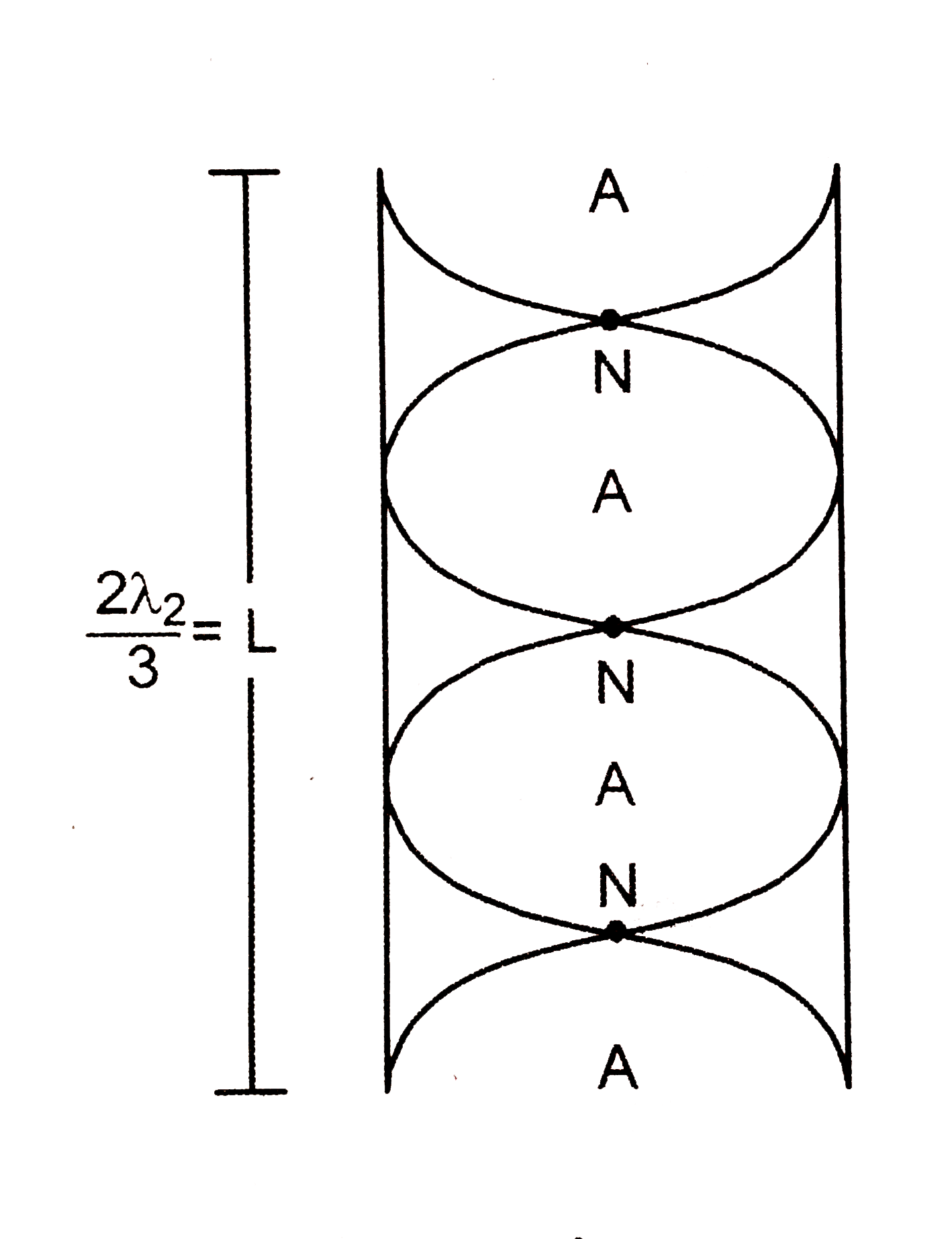Mode 1 : In this mode of vibration there is node at the centre of the pipe and two antionodes are at aeach open end

`L=(lambda)/(2)`
`lambda=2L`
`n=(v)/(lambda)`
`n=(v)/(2L)`
Fundamental frequency
`n=[(v)/(2L)]`
Mode 2 : In this mode, there are three antinodes at top, bottom and centre having two intermediate nodes.

`v=n_(1)lambda_(1)`
`n_(1)=(v)/(lambda_(1))`
Also, `lambda_(1)=L`
`n_(1)=(v)/(L)`
`:. n_(1)=2((v)/(2L))`
`:. n_(1)=2n`
Mode 3 : In this mode of vibration, there are 3 nodes and 4 antinodes.

`v=n_(2)lambda_(2)`
`n_(2)=(v)/(lambda_(2))`
`n_(2)=(v)/(lambda_(2))" " ( :. L=(3lambda_(2))/(2))`
`=3((v)/(2L))" ".... ( :. lambda_(2)=(2L)/(3))`
`:. n_(2)=3n`
`:.` In general `n_(p)=(p+1)n`
or ` n_(p)=(p+1)(v)/(2L)`
where, p=1,2,3.....
From above expression it is clear that, In a tube which is open at both the ends all the harmonics are present as overtone
Numerical
Given `I= kg, m^(2) omega_(0)=30` rad/sec `omega=0`
`t= 10 min`
`=10xx60=600sec`
`alpha=(omega-omega_(0))/(600)`
`=-(30)/(600)`
`alpha=-(1)/(20)"rad"//d^(2)`
`tau=Ialpha`
`=1xx-(1)/(20)`
`=-(1)/(20)`
`tau =-0.05Nm`